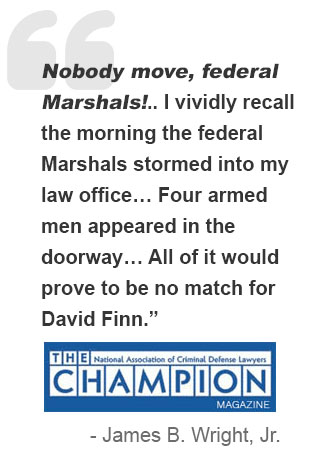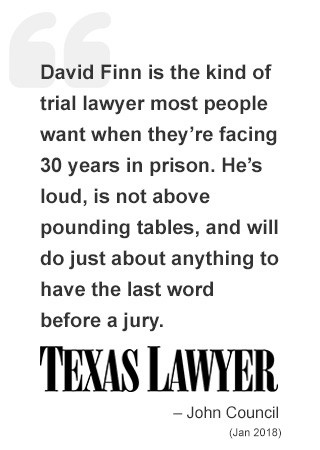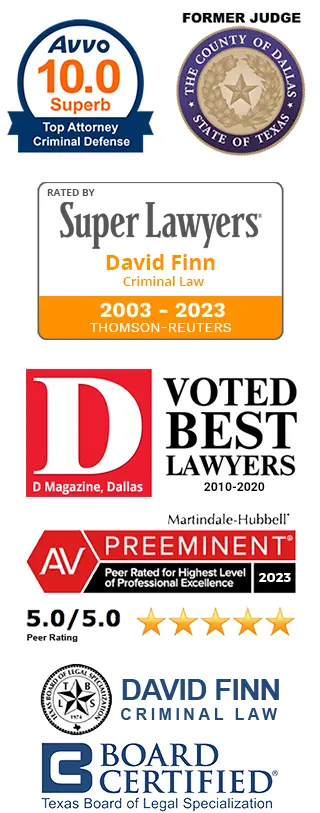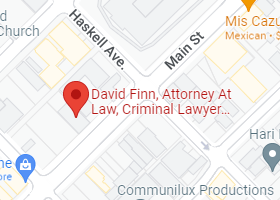

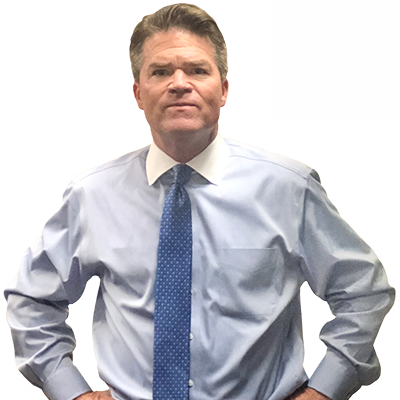
Playing Hardball – The Feds pitch a shutout in the area’s first ‘three strikes’ case
07/04/1996
By Holly Mullen / Dallas Observer
Mark Linnear Hays sat beside his defense attorney in federal court two weeks ago, arms folded across his chest, face drawn and sullen.
So far, it had not been a good day. It was halfway into his trial–U.S. vs. Hays–and a string of forensics experts had spent the morning testifying how blood, hair, and fibers found on a 9mm pistol and clothing linked him to an armed robbery of an East Dallas Eckerd Drug store 14 months earlier.
When the parade of government witnesses had finished, Hays–who all week had raised churlish behavior to an art form–muttered something about wanting to sort through the evidence himself. U.S. District Judge Sidney Fitzwater patiently complied with the request and removed the jury. Then the sinewy man with the turned-up nose, known as the “Ninja Bandit” in police circles from California to Georgia, strolled to the evidence table at the front of the courtroom. Flanked by four federal marshals, Hays fingered the gun; a thick, knotted rope; a police scanner; a knit ski cap; and everything else in the government’s arsenal against him.
He then moved to a huge poster board showing magnified microscopic samples of his head and pubic hair–a stunning visual aid for the jury.
“This is just superficial trickeration!” Hays growled, and told his court-appointed attorney, Tom Mills, to demand that the two photos be separated and clearly noted as different pictures for the jury. Mills dutifully registered the complaint with Fitzwater, and the prosecutors agreed to divide the photos.
Mark Hays, 39, had fled from a previous trial in Los Angeles in August 1993, and–police believe–had spent the next two years roaming the country, pulling off finely tuned armed robberies of drug stores, supermarkets, and check-cashing outlets. With a criminal record stretching back to age 15–for car theft–Hays was no stranger to the courtroom. He had, in fact, been schooled in the ways of The System, raised as he was by a father whom California police had dubbed the leader of “The Rooftop Gang,” a band of 20 or so Hays friends and family members suspected of committing at least 60 violent armed robberies in the San Diego and Los Angeles areas in the late ’70s.
Hays had made a nice life for himself off of other people’s misery. Had he a resume, he could have listed his occupation as “career criminal.” The Feds really wanted this guy.
Indicted on four counts last year involving conspiracy and armed robbery, Hays had become the poster boy for the federal “three strikes, you’re out” statute, a pet piece of President Bill Clinton’s 1994 crime bill. The federal law (similar statutes are also in place in several states, including Texas) allows a judge to sentence a twice-convicted criminal facing a third jail term for a “serious, violent felony” to life in prison.
So certain of Hays’ guilt was the government that Paul Coggins, U.S. attorney for the Northern District of Texas, tried the case himself–his first courtroom appearance since Clinton appointed him to the post more than three years ago. If convicted, Hays could become the first three-time felon in North Texas sentenced to life in prison under the “three strikes” statute.
So there was Hays, up to his eyebrows in legal trouble, an avalanche of evidence rumbling toward him. Yet he seemed bent on lending a helping hand to the prosecutors who wanted to put him away. He whined endlessly about Mills’ representation, and more than once demanded a new lawyer. He frequently blurted out confused comments from the defense table. As trials go, U.S. vs. Hays did not shake the world. A few blocks away, there were showier doings as Michael Irvin’s lawyers tried to stall his grand-jury indictment on drug charges. A few miles north, Dallas City Councilman Paul Fielding faced accusations of fraud and influence peddling. But Hays was a more typical courtroom drama–a neat little window on the state of ordinary, everyday justice.
The jurors, of course, knew nothing of what the principal players had at stake in the case. The intricacies of Hays’ past crimes were withheld from them, and would only be raised if and when he was sentenced. They missed most of Hays’ outbursts, too. And they didn’t know how badly Coggins wanted, once and for all, to strike Mark Linnear Hays out.
As always, 33-year-old Lynn Thompson drove his van to work on the morning of April 24, 1995. He pulled into the parking lot of the Eckerd Drug at 6110 Samuell Boulevard–where he had worked as manager for five years–and let himself in at 7:40 a.m.
According to his court testimony, Thompson, a tall and slender father of three, went to his office, deactivated the store alarm, and activated the time lock on the store safe. It was set to open in nine minutes.
“I was at the back [cash] registers, and I heard a very loud crashing noise,” Thompson testified in a strikingly calm voice. “I’m walking very fast to the front of the store…and I see debris hanging from the ceiling, rope coming through the ceiling, and a person standing there wearing dark clothing and all.
“The first thing I think of…well, this is not a movie.” Thompson described an intruder dressed head to toe in dark colors–blue coveralls, a knit ski mask, gloves, and black shoes. He had scarcely registered what was happening when the man brandished a handgun. Thompson bolted and ran toward a back emergency exit in the stockroom. “I was running back, and I hear a handgun go off, just boom,” he said. “I’m thinking, you know…I was thinking of my kids, really.”
The bullet intended for Thompson missed, and lodged in a store wall. The intruder chased Thompson into the stockroom, then broke the door off the hinges and burst in. He grabbed Thompson by the shoulder, then slammed a pistol down on his nose. Then he forced Thompson back to the store office, where he smashed the gun butt against the manager’s head.
Woozy and bloodied from the blow, Thompson watched as the gunman helped himself to the safe’s contents–some $11,500 in cash and checks in one zipper bag and $8,300 in another. After demanding the keys to the store, the man forced Thompson to the floor, handcuffed him, and fled through the front door.
Waiting in the parking lot was a car with 24-year-old Keith Marvell Walton at the wheel. Walton–the star prosecution witness in the Hays case–was convicted last year for his part in the armed robbery. He hoped to get a little time shaved off his 16-year federal sentence by testifying against Hays. During the trial, Coggins and Assistant U.S. Attorney David Finn admitted a show of leniency was possible, but insisted no deal had been struck for Walton’s cooperation.
With Hays glaring at him from 20 feet away across the courtroom, Walton unraveled the getaway story. He said he drove the car–stolen from a rental agency–to a motel across the street from the Eckerd store. There, the men jumped into Hays’ pickup truck and headed back to the hotel where they had stayed the previous night–a Holiday Inn on Market Center Boulevard.
Hays, Walton testified, tore the ski mask in two in an instinctual move to destroy potential evidence, then showed his accomplice “some little blue bags the money was in. He was talking like it was a nice sum of money.”
The Dallas robbery was the latest in a long list of similar crimes police believe Hays and his family members have committed over a span of some 20 years.
Hays and his father, Charles Lee Hays Sr., were convicted of a 1981 armed robbery of a San Diego-area drug store. Police referred to the family operation as “The Rooftop Gang,” and believed it responsible for a string of robberies. All of the crimes shared the same characteristics: a dramatic, commando-style raid in the early morning, usually through a hole cut in the store’s roof. The intruder wore dark clothes from head to foot, and shimmied down a rope dropped from the ceiling to the floor. A weapon was always used–in the 1981 robbery, it was an M-1 carbine.
Hays was sentenced to four years in a California state prison for that robbery. California police records show he was paroled in January 1984 and had numerous scrapes with the law over the next eight years, including arrests for robbery and parole violations. The cases were all dismissed for lack of evidence.
But Hays found himself in serious trouble again in 1992 when two back-to-back armed robberies in Los Angeles suburbs landed him in jail. In August 1993, a Norwalk, California, jury convicted Hays of the robberies. When the panel returned with its guilty verdict, it learned what the judge and attorneys had already discovered during deliberations: Hays, who had earlier posted $100,000 bond, had jumped bail and fled.
He remained a fugitive for more than two years, hopscotching across the country and, police believe, pulling off similar robberies in Indianapolis, Atlanta, and Birmingham, Alabama. Hays spent much of his time flying back and forth between Denver, where his wife and two children lived, and Dallas, where his girlfriend was.
In late April 1995, prosecutors said, Hays began masterminding the plot to rob the Dallas Eckerd. Their reconstruction of events went like this:
On April 23, 1995, Hays bought two MarkAir plane tickets in Denver for himself and Walton. Their destination: Dallas. They brought with them a large duffel bag, rope, tools, and dark clothes. When they arrived at D/FW Airport, Hays paid more than $300 to get his Chevy pickup out of long-term parking–left there the last time he had visited his girlfriend in Dallas.
The men drove the truck to the Holiday Inn, where they spent the night. Walton testified that Hays had asked him to wake him at 4 a.m. “I kind of lounged for a while; I stayed up for a while playing a little arcade game on the hotel TV,” Walton said. “I called my girlfriend in Downey, California, and talked to her for about an hour.” As ordered, he woke Hays shortly before 4. They dressed and headed for the Eckerd store. Hays knew the route by heart; he had cased the place on previous stops in Dallas.
They managed to pull off the heist. It might have been perfect, but for one hitch. Back at the Holiday Inn, as Hays began to pull the cash from the zipper bags, he found it: a tiny tracking device implanted in a stack of dollar bills. “Mark said, ‘Oh man! It’s a tracker!'” Walton testified. “And about that time, I heard a helicopter.”
Hays had shed his coveralls, but was shoeless. Frenzied, he ran to the door and told Walton he was going out to destroy the tracker, and would return for him in two minutes.
But that was the last Walton saw of Hays until the trial. “I got to pacing a while. Mark didn’t come back,” Walton testified. “I peeked out the door, and more and more police were out there. I ducked down and did like a little frog walk along the balcony. I got down to the ground and I saw a man cleaning the pool. I was going to take off my clothes and jump in. And then I decided it wasn’t a good idea.”
Minutes later, Dallas police caught up with Walton. He had scaled a fence and was soaked to his chest from a murky canal he had waded through while trying to escape. After telling a long series of lies to interrogating officers, Walton finally implicated Hays–he knew him by one of his 16 aliases, Malcolm Fox–in the Eckerd hold-up. Walton and Hays were both indicted on four counts: conspiracy to commit robbery; aiding and abetting a robbery; using a firearm in the commission of a crime; and traveling interstate with the intention of committing a violent crime.
As Walton wound down his testimony, assistant prosecutor Finn sauntered to the evidence table and picked up a book police found at the Holiday Inn scene. Betrayal, by Khalid Abdullah Tariq Al-Mansour, lays out a thesis showing how African-Americans have been repeatedly betrayed by whites. Trial witnesses said that Hays, a self-proclaimed black Muslim who sometimes used the alias Walli Shabbaz, read the book often. At Hays’ trial, though, the book became a favorite prop for the prosecution. Its juicy title rolled off the tongue. The drama packed into that one little word–betrayal–was just too good to pass up.
“Are you familiar with this book?” Finn asked Walton. “It’s a book that I saw Mark reading sometimes,” Walton answered. “Is it fair to say you feel a little betrayed by Mr. Hays, leaving you in that hotel room?” Finn asked.
“Yes.”
“Did you think he was going to come back?”
“For a little while I did,” Walton said, “but then after a while, I knew I was a goner.”
Finn knew that Mills, Hays’ attorney, would do his best to discredit Walton’s testimony, so he methodically opened every possible door to the witness’ shady character before Mills could beat him to it.
“You’re no stranger to the criminal-justice system, are you Mr. Walton?” Finn asked, allowing Walton to describe his convictions and jail sentences for bank robbery at age 18, auto theft at 20, and the Eckerd job at 24. Walton also described the gang-inspired tattoo he got when he was 16. It covers his entire back: “INGLEWOOD’S FINEST.”
Walton said he had no intention, at first, of ratting on Hays. “I kept thinking about the street code, you know–‘Don’t talk, don’t talk,'” he said. “But then,” Walton said softly, “I got to thinking how he left me at the motel. He don’t really care about me.”
It was some kind of sell job Hays pulled on Walton, who, with his thick speech and pathetically lackadaisical responses, seemed to be either IQ-challenged, fried by drug use, or both. He had only known Hays for a few weeks when he agreed to do the Eckerd job with him.
“He said we would take the money and go to the Freedom Festival in Atlanta,” Walton testified, dreamily. “That’s when the black colleges all get together every year and just have a big party. There’s a whole lot of pretty girls walking around. The dream that Mark sold me was pretty good.”
Tom Mills got more than he’d bargained for when the federal magistrate’s office appointed him to represent Hays. Mills, 49, has spent the better part of his 23-year legal career defending tonier clients–white-collar guys with money and status who got nailed on bankruptcy fraud, money laundering, racketeering, and the like.
In February, he became the second lawyer assigned to Hays. That’s also when Mills learned he’d be squaring off in court against Coggins–and got a hint of the mass of evidence the government would be using against his client.
The day of the Eckerd robbery, after Hays had fled and Walton had been arrested, FBI Special Agent Kevin McCrary and several Dallas police detectives entered Room 303 of the Holiday Inn on Market Center Boulevard. It was like stumbling upon the mother lode. In their mad dash to escape, Hays and Walton had left behind literally bagfuls of evidence: a green duffel stuffed with cash and torn checks made out to Eckerd; the dark coveralls and ski mask; two cellular phones (one of which offered up the most recent call in its memory–to the Oak Cliff home of Hays’ girlfriend); a police scanner and a scanner manual with the Dallas Police Department channels highlighted; the book Betrayal; and an album of Hays family pictures and snapshots–including one of Hays sitting on what appeared to be a hotel bed. He is grinning like a lottery winner, puffing on a fat cigar, wearing a baseball hat, and holding a wad of cash. A pile of bills is on the bed beside him, and sticking out from beneath his hat are several hundred-dollar bills.
That evidence, combined with physical descriptions from Eckerd manager Thompson and a Holiday Inn desk clerk, helped McCrary draw a near-instant connection: Hays.
For the next six months, the pressure to find Hays was intense. His face was emblazoned on wanted posters in federal buildings and in newspapers. A melodramatic re-enactment of the crime showed up on the television series America’s Most Wanted, and to the FBI’s great delight, a tipster responding to the show squealed on Hays. He was apprehended late last year in Atlanta, where he had been living with his mother, and extradited to Dallas to stand trial.
Government prosecutors, Mills soon learned, would spare no expense nailing Hays once and for all. He would be their shining example of a habitual criminal–the kind of guy who has had his second chances but shows no hope of rehabilitation.
Not only were they seeking a conviction, but they had also filed papers with the court “offering notice of intent to seek enhanced punishment.” In plain English, Coggins and Finn were asking permission to use Hays’ previous “two strikes”–burglary and armed robbery– against him at the sentencing they hoped eventually to attend.
Amassing the evidence was costly. The government was paying for expensive DNA tests, hoping to match blood found on the gun butt to Thompson’s blood. The prosecutors hired Dallas County and FBI forensics experts to analyze head hair found in the ski cap and a pubic hair found in the coveralls. And they had flown in police and FBI agents from Atlanta, Indianapolis, and California just in case they needed to testify.
For the sum of $45 an hour for out-of-court costs and $65 an hour during the trial, Mills–whose greatest current fame comes from representing former Dallas Independent School District trustee Dan Peavy on insurance fraud and a multitude of related federal charges–was to zealously represent Mark Hays. And facing the overwhelming evidence against his client, he did what he could.
Mills, for instance, tried to have the evidence from the hotel room thrown out, arguing that police seized it illegally. He made several motions for a mistrial, based on what he perceived were prejudicial statements from witnesses or juror bias. Judge Fitzwater denied them all.
But the defense attorney’s heaviest burden came in the form of his sullen client, whose petulant antics had already provoked his first court-appointed lawyer to withdraw from the case. Hays insisted that Mills and the government were somehow in partnership to destroy him.
On the first day of trial, after a jury had been chosen, the judge called a recess. Hays suddenly began railing against the U.S. legal system, blurting out something barely distinguishable to the judge like “I do not answer to your jurisdiction.”
Mills, composed but obviously angry, leaned over to his client, who barked out, “I’m not gonna let them violate my rights like this. You do something. You’re supposed to be representing me!” Said Mills: “I’m doing the best I can, but you’re making that very difficult.”
Fitzwater often appeared exasperated with Hays’ protests, but gave him wide latitude. On June 20, after the government rested its case and Mills was set to present his defense witnesses, Hays balked at the way his wife, Lawanna, would appear to the jury during her testimony. Serving a federal prison sentence in Louisiana for credit-card fraud, Lawanna Hays showed up in her orange coveralls. Hays wanted Fitzwater to allow her to wear street clothes.
The judge ruled that although the defendant has the right to wear “civilian” clothes to court, the same standard does not apply to witnesses.
Lawanna Hays was the only witness to appear for the defense, but it wasn’t for Mills’ lack of trying. Before calling Lawanna to the stand, Mills asked Fitzwater for a continuance, hoping to buy more time to track down Hays’ son and daughter and other acquaintances Hays had promised could offer an alibi for him on the day of the robbery. But Mills got no help from his client in finding any other witnesses.
The tension between Mills and his client was so thick, in fact, that Fitzwater took the unusual step of swearing Hays in to discuss why his witnesses were no-shows. “There seems to be some problem with my defense,” Hays testified. “For him to continuously treat me like a child is an insult. I have worked with doctors and lawyers for many years. I know some of the wicked things that they do. And I know some of the good things they do…I thought I had [Mills’] trust, but things have come out that are just inappropriate.”
Fitzwater took mere minutes to overrule Mills’ motion for a continuance. Lawanna Hays, 34, took the stand in her prison garb and said she had “pretty much” been with Hays in Denver from late March to early May. They celebrated their 13th wedding anniversary on March 28, 1995, she testified. And indeed, the search of the Holiday Inn had turned up an anniversary card with her signature on it. It was a deep-red color, with flowery gold script. “To my husband, my very special someone,” it read.
From his chair at the defense table, Hays periodically nodded his head and mouthed words to his wife, who cast fleeting glances at him. The show did not go unnoticed by prosecutor Finn, who jumped to his feet and asked Fitzwater “to admonish Mr. Hays to stop mouthing messages to the witness.”
In a fit of pique, Hays rolled his eyes and clamped his arms across his chest. He stared coldly at Finn. As Coggins cross-examined Lawanna, Finn and Hays locked their eyes on each other in a kind of macho courtroom showdown.
Minutes later, as lawyers for both sides approached the bench for a private discussion with the judge, Hays glared at Finn and puckered his lips in a pantomime kiss.
Paul Coggins cut a friendly figure in court, like the eternally patient dad who helps you with your homework. His deep, melodious voice seemed to put the jury at ease from the first day of trial, when he delivered a lilting, chronological account of the conspiracy and armed robbery of which Hays stood accused.
Coggins, 44, has been a darling of the local press–often portrayed as a Renaissance man. Schooled at Yale and Harvard and, like his friend Bill Clinton, a Rhodes Scholar, Coggins has worked both sides of the courtroom aisle–defending suspects in federal crimes and now prosecuting them. In his spare time, Coggins writes novels and hopes someday to write a screenplay.
So the fact that the U.S. attorney for Northern Texas made ample use of metaphor in his opening statement wasn’t surprising. It was just that the lengths to which he stretched them got a bit painful.
“An opening statement is like a road map,” Coggins told jurors. And their destination, he said, would be a “just verdict.” Along the way, there would be “warning signs” offered by the judge and lawyers. But it was up to them to stay on track–and bring in a guilty verdict on all four counts.
The jurors evidently felt comfortable in the driver’s seat. They were engaged by Coggins’ show, and he moved through the trial with little hint that he hadn’t tried a case himself since before his 1993 appointment to the U.S. Attorney’s office. One by one he moved through the government’s witnesses, never rattled by Mills’ attempts to plant a tiny seed of reasonable doubt.
Mills’ defense strategy was to suggest a case of mistaken identity–that Hays was never even near Dallas on the day of the robbery. Mills contended that prosecutors never adequately established Hays’ identity through physical descriptions offered by their witnesses.
In the end, however, the little wrinkles in Coggins’road map mattered not. The jury broke for deliberations at 1:30 p.m. on Thursday, June 20, and returned with a verdict exactly three hours later: Mark Linnear Hays was guilty on all four counts.
The jury exited quickly. Federal marshals surrounded Hays to accompany him back to jail. Fitzwater set sentencing for September.
As the defendant shuffled, head down, toward a side door in the courtroom, a row of police officers from Dallas, Los Angeles, and Atlanta stood. Their joy was palpable. It couldn’t, in fact, be contained.
“Good luck, Mark,” razzed FBI agent McCrary.
“Yeah, good luck,” others chimed in.
Hays, ever defiant, turned and shot them an icy stare, then shouted, “Go to hell, you white devils!”
When Hays comes up for sentencing, the government will argue for life in prison–no good time, no parole. “We’re going to try to put him away for a long, long time,” Finn said after the verdict.
There is, however, one potential hitch to the Feds’ case. Though he was convicted of a “second strike” in California in 1993, Hays slipped away before the court could actually sentence him. The question is whether that unfinished business will count as a qualifying felony under guidelines for the three-strikes rule. As far as prosecutors know, a precedent on such a situation has never been set. So getting a life sentence for Hays will take a little creativity.
“I’m sure we’ll focus on the idea that flight should not work to the benefit of the defendant,” Finn says. “Hays got on the stand in that California trial and told the jury he had turned his life around–that he was going to change. And the next day he flees. It’s pretty logical that running like that shouldn’t work to his advantage.”
For his part, Mills had expected to spend the months prior to sentencing with his client by telephone, seeing how the one-on-one visits had become more than a little taxing. But Hays took care of that problem. Three days after his conviction, Hays called Mills collect to tell him he would be representing himself from now on.
“I don’t know what he’s doing,” Mills says with a deep sigh. “He needs an attorney now more than ever. This three-strikes thing will be complicated. I don’t think he knows what he’s in for.”
Hays was one of Mills’ toughest clients, harder to deal with, in some ways, he says, than the defendant in a capital murder case who set his hair on fire in the courtroom, or the rape suspect who cut off one of his testicles and flushed it down the jail commode. “I really busted my ass for this guy,” Mills says. “It’s a very strange situation when you’re getting paid a fourth or fifth of your normal hourly rate, and you’re sincerely trying to represent a guy you believe in. And all the while he’s sitting beside you smirking and making it very, very difficult.”
And Coggins’ reaction to the verdict? On the way out of the courtroom, he smiled, and with just the right measure of political caution said, “It was the right verdict.”
It seems certain we’ll see Coggins in court again. Already, rumors are buzzing among his staff that he may wade in as lead prosecutor in U.S. vs. Dan Peavy. In which case, Coggins will have a familiar adversary: Tom Mills.
“Really? I hadn’t heard that,” is Mills’ response to the rumor. “Well, bring him on, I guess. That should be fun.
Phone Numbers
Office: (214) 538-6629

